Interview: Benoit Paillé
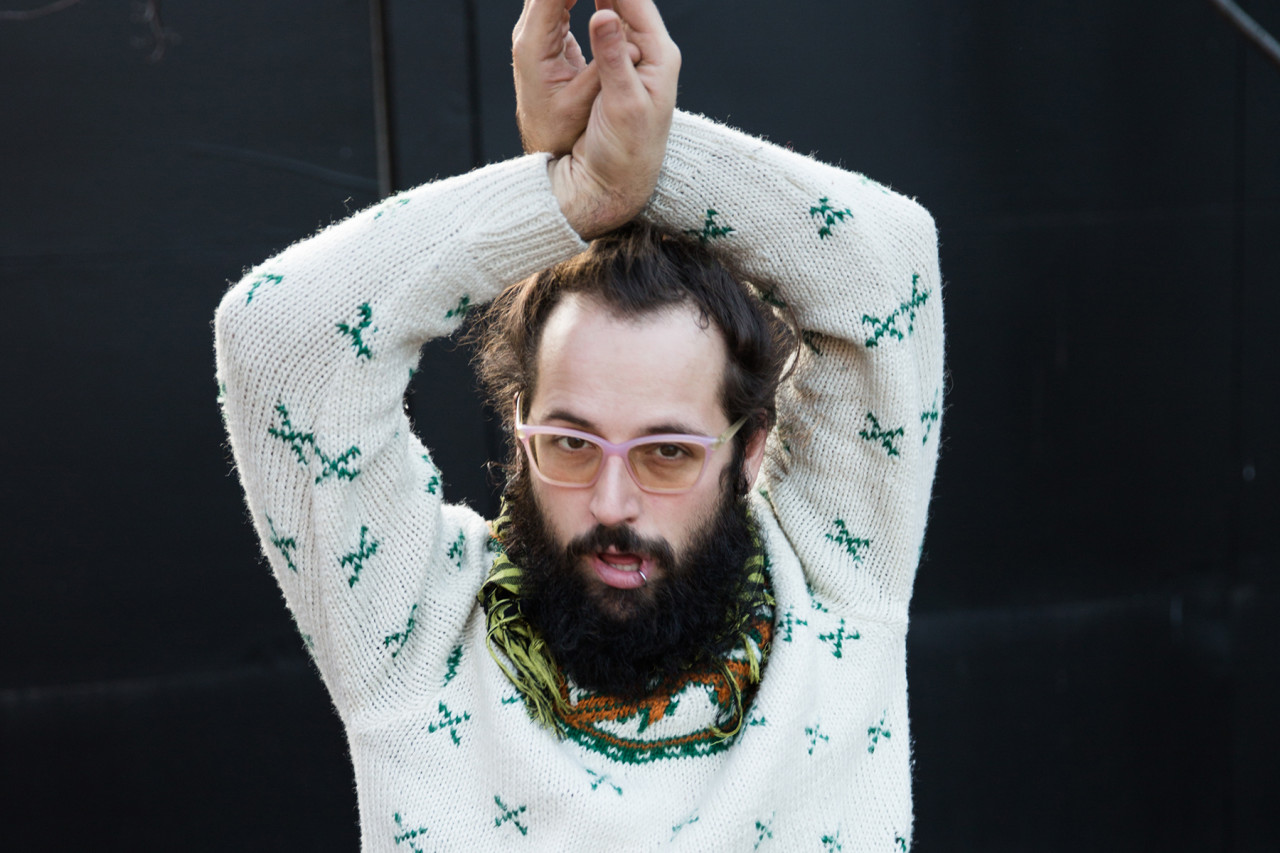
Quand êtes-vous devenu photographe?
Grosse question. C’est vraiment arrivé par hasard, je trippais modélisation er rendu 3D, etc. Au cégep en sciences naturelles, un ami m’a prêté son appareil photo, j’ai pris toute les prises de courant en photo, je comprend pas pourquoi ou je veux pas m’en rappeler, anyways j’ai gardé l’appareil une semaine … un ans plus tard je m’en commande un sur internet genre je devais avoir 23 ans, et c’est à peu près là que je suis devenu photographe dans ma tête (parce que aussitôt qu’on a un appareil photo dans les main on se dit photographe, donc j’ai fait ça oui oui). Ensuite 3 ou 4 ans après je voulais faire plus *hot* alors j’ai commencé à dire que j’étais pas photographe mais artiste. Bref c’est dommage que ça soit pas une entrevue téléphonique comme ça j’aurais pu dire coupééé. Oui je pourrais effacer, mais à quoi bon.
De quelle façon votre style de vie nomade a-t’il inspiré votre art?
Je suis rendu à un stade dans ma création où je ne crée plus en série, je ne crois plus vraiment au travail académique (série, texte, démarche, explication, etc) comme je travaillais avant. Maintenant c’est beaucoup plus fluide, une fluidité que je me suis donné justement avec ce mode de vie. C’est pas tant que ça m’inspire, mais que ça me permet d’avoir l’esprit déviant (permettre une total spontanéité ou l’encourager disons ).
L’esprit déviant je le vois comme la possibilité qu’on donne à notre esprit de dévier de la norme (sa propre norme) je pourrais le relier à la génétique et au principe de mutation par hazard qui sur le long terme de la sélection naturelle permet l’émergence de traits nouveaux, ce hasard qui est le fruit de ce que nous sommes n’a pas d’à priori, de jugement, de design intelligent. non que du pure hasard! Le concept d’esprit deviant, c’est de couper ses auto-jugements, restrictions, normalisations et de prendre conscience des structure qui nous ont formés, Ensuite la possibilité de déviance ou création devrait être plus élevés. Dans le fond je suis un ingénieux technicien créatif.
Qui sont vos inspirations en terme de photographie?
L’inspiration ça va dans les deux sens pour moi, autant une inspiration répulsive (voir toujours les mêmes images me pousse dans la direction opposée) ou inspiration positive ( beaucoup dans le design sur Behance, la lecture, On crée ce que on sais!, donc mon inspiration c’est ma curiosité, autant technique qu’humaine, d’aller explorer avec mon appareil photo les zones à l’intérieur de moi autant qu’à l’extérieur) Oui c’est étrange de se questionner sur ses inspirations, surtout avec l’internet, ou tu es bombardé de trucs d’inspiration, de blog, de Tumblr et tu follow du monde donc au final tu peux te retrouver dans un vase clos et la sélection d’inspiration tout pré-programmée, artificiellement crée par des algorithmes … selon tes likes, tes follows, etc etc. Je vois ça de plus en plus comme la nouvelle normalisation, de la fausse inspiration? Je me questionne beaucoup la dessus récemment.
Parlez-nous de votre série “The Kitsch Destruction Of Our World”
On dirais une troisième metamorphose d’un concept esthétique, je montre la laideur, la destruction, la coupe à blanc, des lieux touristiques bétonnés, des territoires zone tampon entre les ville, l’esthétique de clôture, etc. Car ce que nous faisons subir à notre monde est complètement kitsch (uniformisation des territoire, urbanisme basé sur la domination de l’automobile, clôturation de tous les espace, coupe à blanc *contrôlée* lol etc.
Parlez-nous de la série “Dollar Store”
“Sir, if you have purchased this product, please would you be so kind as to send this letter o the World Organization for Human Rights. Thousands of people who are being persecuted by theChinese Communist Party will thank you and will remember forever. ”
– Message from a worker in the Masanjia Labor Camp, Shenyang, China, 2012.
If, according to Guy Debord, the carnival-like spectacle that characterizes the second half of the 20th century “is not a set of images, but a social relation among people, mediated through images” (The Society of the Spectacle, 1967), never more than today (and less than tomorrow) social relationships between producers of cheap goods and Western consumers would have been so severely unbalanced.
While gigatons of disposable objects, devoid of any practical or even aesthetic value, are exposed in one dollar stores – equally available to the derision of the rich and the use of the poor – it is no longer possible to ignore the indecent conditions linked to the production of these objects by Asian mega-factories. Recent history is full of tragic examples of plants where these worthless objects are made and whose retail cost per unit has absolutely nothing in common with the value of the lives regularly lost in the manufacturing chain.
I applied myself to magnify to the extreme the aesthetic potential of these $1 plastic trinkets, rendering them aggressively kitsch, in order to show the absurdity of their existence, with the hope – perhaps illusory – of generating a reflection, or even to transform consumers’ attitudes about them, and also to act in a practical way to transform the working conditions of the makers of these very vulgar objects.
In this perspective, I extend my practice centered around the sublimation of the banal, already begun in other series (Alternative and experimental landscape, Stranger Project, On the beach, Undernight, etc…). Within Dollarstore however, the object acquires a new and crucial importance. I approach the subject in a quasi-sculptural way, manipulating and transforming it physically before taking a picture. It was a occasion for me to experiment with still-life and object in photography for the first time. Like a scientis, this is the result of my reseach.
In the final phase of the project, I try to answer the call for help issued by a Chinese worker in Shenyang, which a consumer from Oregon found in the packaging of their Halloween decorations. I intend to infiltrate myself in the mass consumption circuit by printing my photos into postcards that I will distribute in one dollar stores, unbeknownst to the customers who will find them, in turn, in their purchases. By acting through the media of the image, I hope to provoke a questioning of the value of the objects when placed in relation to their conditions of production, and thus link the image to its concrete reality. In a kind of anti-show, at once beautiful and grating, these images are subverted and try to become a riposte at the “heart of the unreality of the real society,” these photographs that are overly kitsch, like the show itself, “the sun that never sets over the empire of modern passivity” (Debord, 1967).
Vos oeuvres ont souvent une qualité quasi-surnaturelle et même souvent de réalité modifiée. Parlez-nous de votre vision et de votre technique.
En vivant déjà dans une réalité modifiée, on rend la Terre tellement sinistre et surnaturelle, je pense que j’ai trouvé une façon de le mettre en évidence. J’ai lu beaucoup de science-fiction au secondaire, de réalité dystopique. Quand je regarde autour de moi, il y beaucoup de choses qui s’apparentent au sci-fi. Parfois il m’arrive de voir ces visions.
VISIONS: Digitalisation of a certain mental space, building of a manifest reality, a symbolic system around my hyper simplified banal, framed and restructured to match the feelings I want to give out for all to see, that is to say the best of my authenticity.
Quelles sont vos opinions côté environnement et quel rôle jouent-elles dans votre art?
Mon rapport à l’environnement c’est que je me sens coupable en criss, être pleine conscience, comprendre que la planète est un organisme vivant (voir l’hypothèse Gaia ) et manger de la viande pareil parce que trop paresseux….
Je crois que la planète est un être vivant, que du plus petit au plus grand c’est un ensemble de vie infini, que l’humain est rendu un parasite pour la planète.
Et dans mon travail je veux la montrer magique, sacrée, la montrer d’une manière qu’on ne la voit plus, on la voit avec des yeux calculateurs, comme une ressource, comme un truc à développement économique, on est dans une vision extractiviste à court terme, car nous n’avons pas de cosmologie commune et globale à propos de la planète terre, rare sont ceux qui considèrent la planète comme un être vivant complet, que l’arbre communique, que il y as beaucoup moins de frontière entre le végétal et l’animal qu’on se fait croire, bref je veux rendre la nature sacrée.
Votre Winnebago, qu’on voit parfois dans vos oeuvres, vous donne la possibilité de voyager. Parlez-vous de ce super engin qui est maintenant devenu votre maison.
Ça va faire deux ans que je vis dans mon camper, première drill, faire des tablettes, chue rendu un homme astheur . Oui ça me donne une grande liberté, de déplacement et surtout pouvoir passer la nuits à des endroit inhabituels, parking louche, zone industrielle, place de dogging. J’aime aussi me dire que cet extra de plaisir que je me suis donné dans la vie, ne me coûte pas plus cher que de payer un appartement minable. Aller voir les amies(es) un peu partout au Québec. J’ai aussi traversé le Canada avec, je me dirige en décembre vers le Mexique et ensuite je vais traverser toutes les Amériques pour aller à la Terre de Feu en Argentine.
Quelle impression avez-vous de Never Apart et qu’est-ce qui vous intriguait de leur galerie?
Que c’est un espace ”queer”. Qu’ils favorisent la diversité, que le directeur soit une drag, que ça ressemble pas à une galerie conventionnelle… Bravo!
Quels sont vos prochains projets, sur quoi travaillez-vous?
Je ne travaille jamais sur quelque chose de précis, ça arrive un peu tout seul. Des fois ça se développe en série, des fois c’est quelque chose de plus chronologique… Je me souhaite plus de portraits.
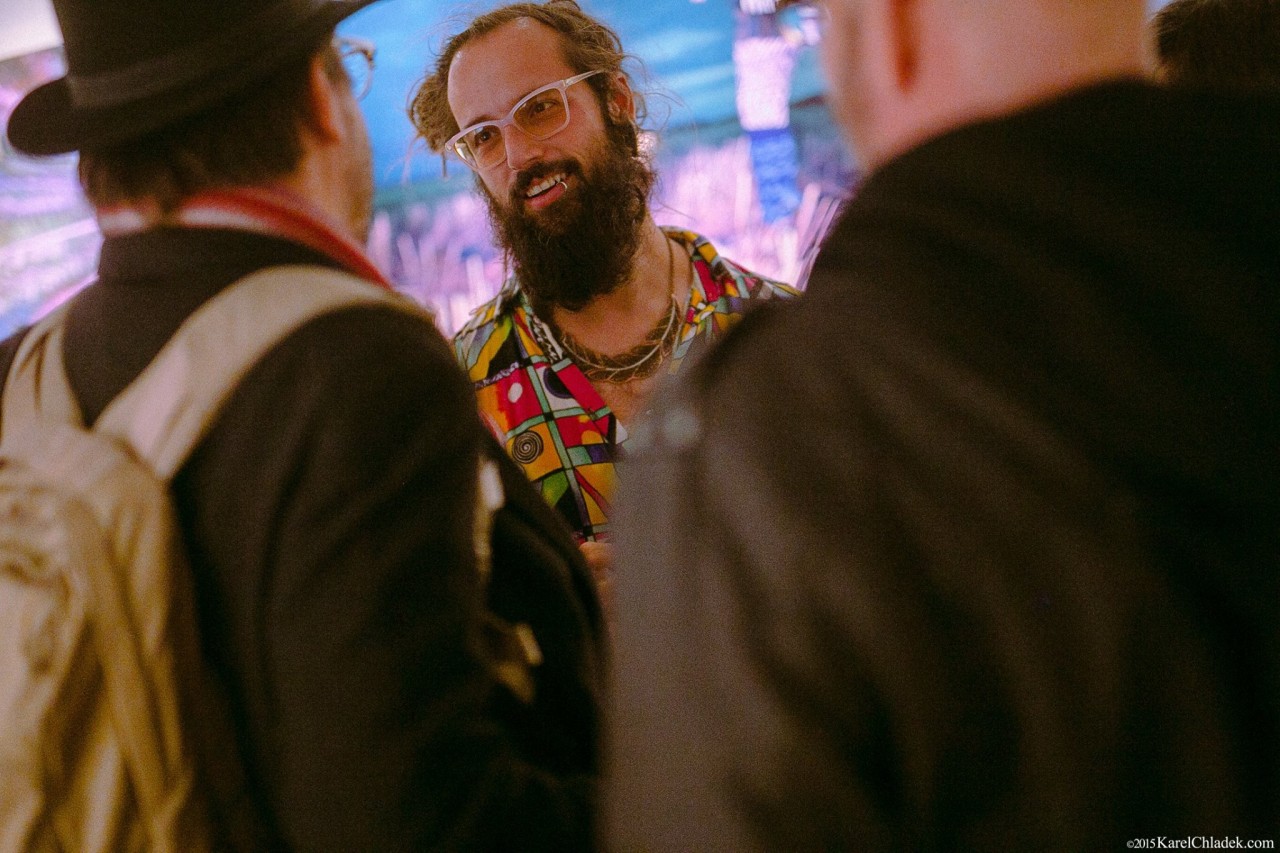
When did you become a photographer?
That’s a big one. It was sort of just luck. I was really into 3D modelling and rendering, etc. In Cégep in natural sciences, a friend lent me his camera, and i photographed every electrical outlet i could find. Don’t understand why or maybe i don’t want to remember why, but i get the camera for a week. I ordered one on the internet a year later, I must have been 23 years old, and that’s basically when I considered myself a photographer (Isn’t that what happens, you get a camera in your hands and you instantly think you’re a photographer? I sure did). After 3 or 4 years, i guess i wanted to sound cooler so I started saying I was an artist rather than a photographer. To bad this isn’t a phone interview, i could have said « cut! » I could take that out but what’s the point.
How have your nomadic travels inspired your work?
Creatively, I’m at a stage where i don’t create in series, I don’t really believe in academic work (series, script, approach, explanation, etc.) the way I used to in my past works. It’s much more fluid now, and that comes from the fluidity I’ve found in this lifestyle. It’s not so much that it’s what inspires me, but more that it’s allowed me to have a deviant mind (allowing for total spontaneity or at least fostering it).
I see a deviant mind as the opportunity to let your mind step away from the norm (one’s own norms). I could link it to genetics and the mutational-hazard principle by which natural selection allows for new traits to emerge in the long term and at random. This hazard contributing to who we are has no a priori, judgment or intelligent design. It’s only chance, at random! The idea of a deviant mind is to cut oneself from our own judgements, restrictions, norms, to be conscious of the structures that have shaped us. After that, the possibility for deviance and creativity should be broadened. Really, I’m an ingenious creative technician.
Who are your photographic inspirations?
Inspiration goes two ways for me, it can serve as a repellant (to always see the same images all over drives me in the opposite direction) as much as a positive inspiration (a lot in Behance design, reading, « You create what you know! », My source of inspiration is my curiosity, technical and humain, to explore with my camera what’s inside of myself as much as what surrounds me). Yes it is weird to question yourself about where your inspiration comes from, especially with the internet around, where you’re bombarded by inspiration boards, by blogs, Tumblr. And then you follow people so in the end you can find yourself in a vacuum with a selection of inspiration programmed and created artificially by algorithms … depending on what you like, what you follow, etc. I see that more and more as the new standardization, false inspiration? I’ve been thinking a lot about this recently.
Tell us about “The Kitsch Destruction Of Our World” series
It feels like a third metamorphosis of an aesthetic concept. I show ugliness, destruction, clearcutting, touristic destinations paved over, buffer strips between cities, fence aestheticism, etc. because what we’re inflicting on our world is absolutely kitsch (uniformity of territories, urbanism centred around the dominance of the automobile, fencing of all spaces, so-called « controlled » clearcutting (lol), etc.
Tell us about the “Dollar Store” series
“Sir, if you have purchased this product, please would you be so kind as to send this letter to the World Organization for Human Rights. Thousands of people who are being persecuted by theChinese Communist Party will thank you and will remember forever. ”
– Message from a worker in the Masanjia Labor Camp, Shenyang, China, 2012.
If, according to Guy Debord, the carnival-like spectacle that characterizes the second half of the 20th century “is not a set of images, but a social relation among people, mediated through images” (The Society of the Spectacle, 1967), never more than today (and less than tomorrow) social relationships between producers of cheap goods and Western consumers would have been so severely unbalanced.
While gigatons of disposable objects, devoid of any practical or even aesthetic value, are exposed in one dollar stores – equally available to the derision of the rich and the use of the poor – it is no longer possible to ignore the indecent conditions linked to the production of these objects by Asian mega-factories. Recent history is full of tragic examples of plants where these worthless objects are made and whose retail cost per unit has absolutely nothing in common with the value of the lives regularly lost in the manufacturing chain.
I applied myself to magnify to the extreme the aesthetic potential of these $1 plastic trinkets, rendering them aggressively kitsch, in order to show the absurdity of their existence, with the hope – perhaps illusory – of generating a reflection, or even to transform consumers’ attitudes about them, and also to act in a practical way to transform the working conditions of the makers of these very vulgar objects.
In this perspective, I extend my practice centred around the sublimation of the banal, already begun in other series (Alternative and experimental landscape, Stranger Project, On the beach, Undernight, etc…). Within Dollarstore however, the object acquires a new and crucial importance. I approach the subject in a quasi-sculptural way, manipulating and transforming it physically before taking a picture. It was a occasion for me to experiment with still-life and object in photography for the first time. Like a scientist, this is the result of my research.
In the final phase of the project, I try to answer the call for help issued by a Chinese worker in Shenyang, which a consumer from Oregon found in the packaging of their Halloween decorations. I intend to infiltrate myself in the mass consumption circuit by printing my photos into postcards that I will distribute in one dollar stores, unbeknownst to the customers who will find them, in turn, in their purchases. By acting through the media of the image, I hope to provoke a questioning of the value of the objects when placed in relation to their conditions of production, and thus link the image to its concrete reality. In a kind of anti-show, at once beautiful and grating, these images are subverted and try to become a riposte at the “heart of the unreality of the real society,” these photographs that are overly kitsch, like the show itself, “the sun that never sets over the empire of modern passivity” (Debord, 1967).
Your work has a unearthly and often “altered reality” essence to it. Tell us about your vision and technique.
We are already living in an altered reality, we make the earth so unearthly, I think I just find a way to point in this direction, I read a lost of science fiction in high school, dystopian reality, When i look around, reality often has lots of similarities with sci-fi. Sometimes I tend to see these visions.
VISIONS: Digitalisation of a certain mental space, building of a manifest reality, a symbolic system around my hyper simplified banal, framed and restructured to match the feelings I want to give out for all to see, that is to say the best of my authenticity.
What are your environmental views and how does that play into your work?
My relationship to the environment is that I feel guilty as fuck. To be fully aware, to get that this planet is a living organism (check out the Gaia hypothesis) and to keep eating meat just because you’re lazy…
I believe that our planet is a living being, that from the smallest detail to the biggest, it’s an infinite tapestry of life, and that humankind has become parasitic.
In my work, I want to present our planet as magical and sacred, to show it as sacred in a way that we don’t acknowledge anymore. We look at this planet with calculating eyes- like a ressource, as basis for economic expansion, we’re very much in a short-term extractive model, we don’t have a common or global cosmology when it comes to planet Earth. Few are those who consider the planet as a full-fledged living entity, that a tree communicates, that there’s far less separation between the vegetal and the animal than we choose to believe. In short, I want to make nature sacred.
Your Winnebago allows you the freedom to travel and also appears in your work. Tell us about this wonderful vehicle which is also your home.
It’s coming up on 2 years now that I’ve been living in my camper. Bought my first drill, made some shelves, I’m a grown-ass man now. It does gives me a lot of freedom, mobility, and especially allows me to spend the night in unusual spaces, sketchy parking lots, industrial parks, dogging spots. I like to tell myself that this thing I’ve treated myself to doesn’t cost me more than renting a crappy apartment. To go see friends all over Quebec. I’ve travelled across Canada with it, and I’m heading to Mexico in December, and after that I’ll cross the Americas to reach Argentina’s Tierra del Fuego.
What is your perception of Never Apart and what about their space intrigues you?
That it’s a queer space, that it promotes diversity, that the Director does drag, that it just doesn’t look like a conventional gallery… Congrats!
What are you working on for the future?
I never work towards something specific, it just happens, sometimes it become a series, sometimes it’s more of a chronological progression… I hope I get to do more portraits.

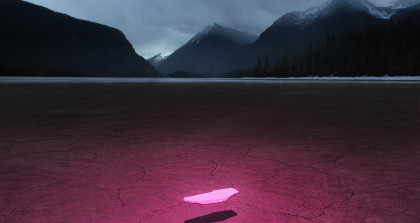

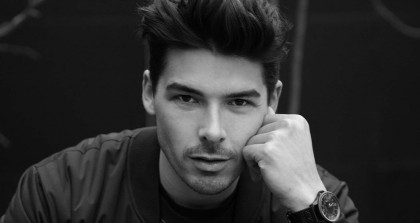
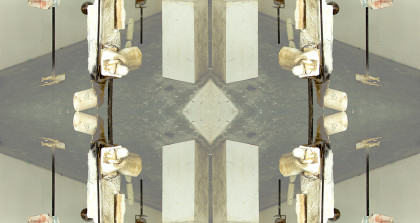
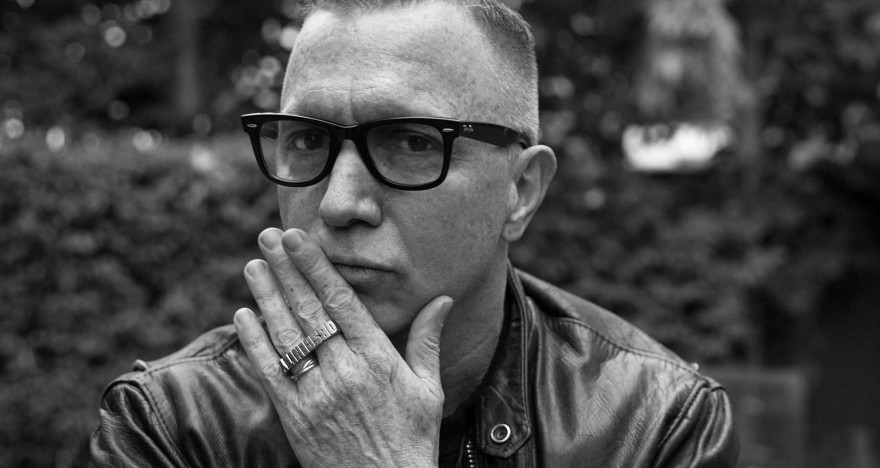
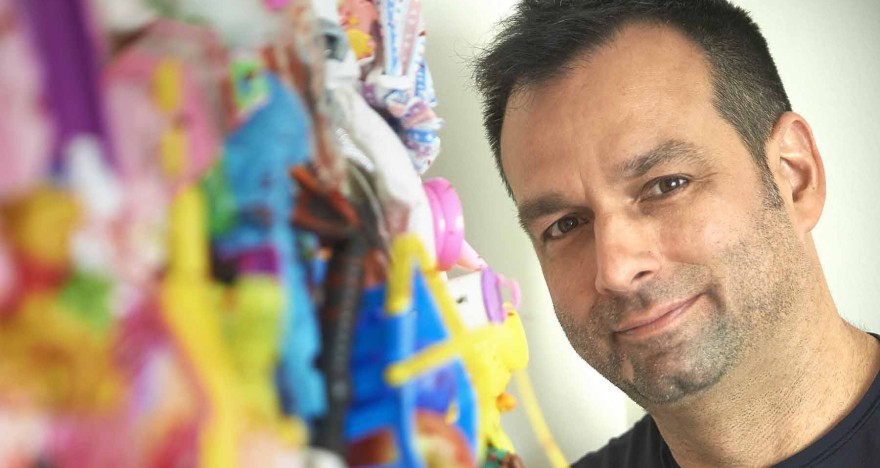
View Comments
No Comments (Hide)